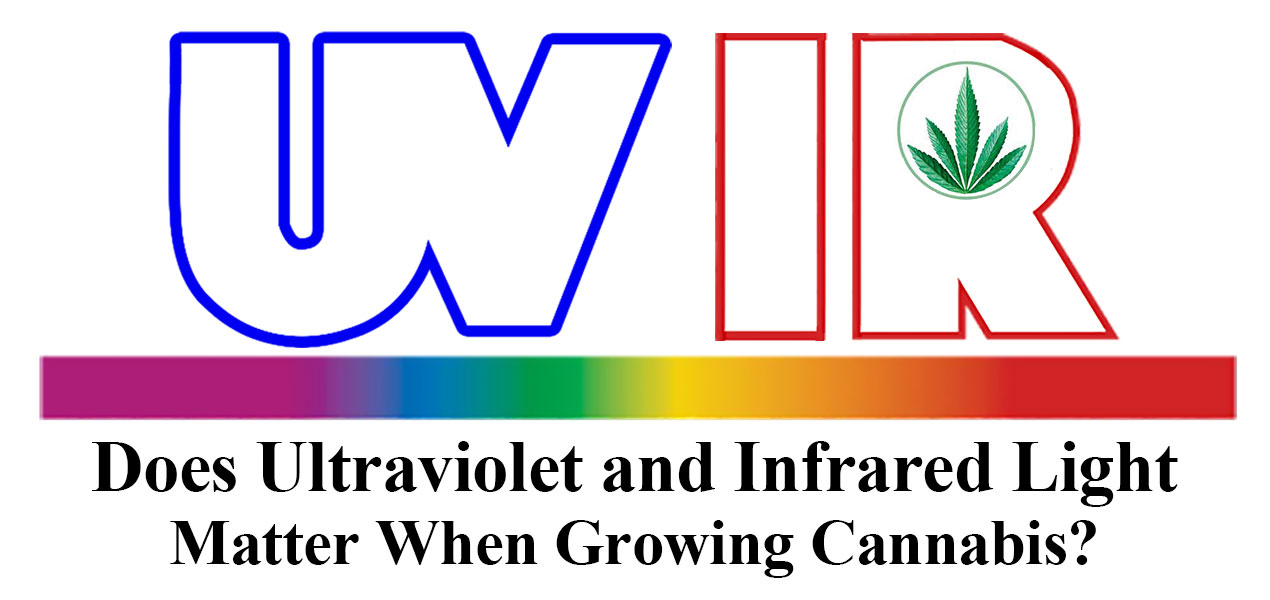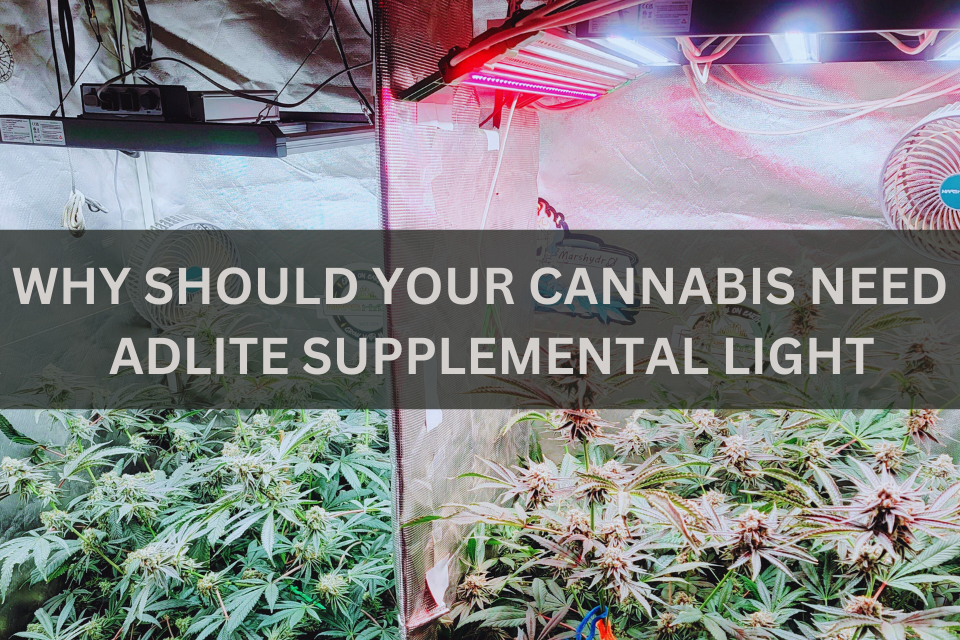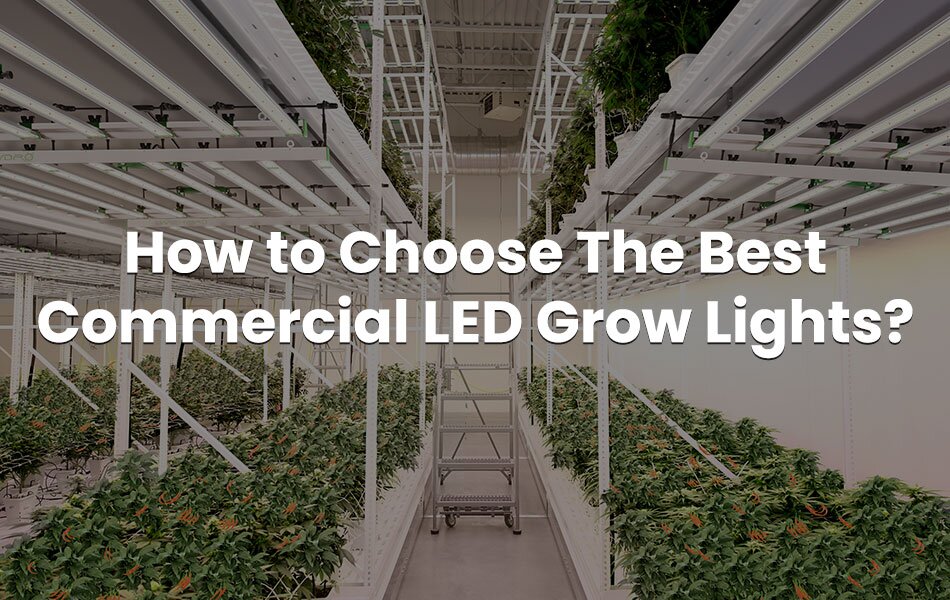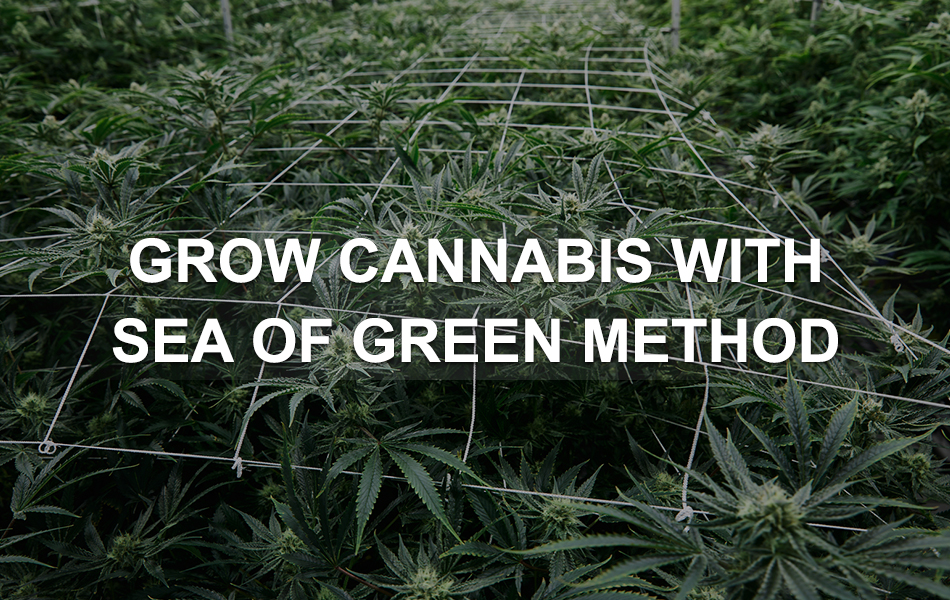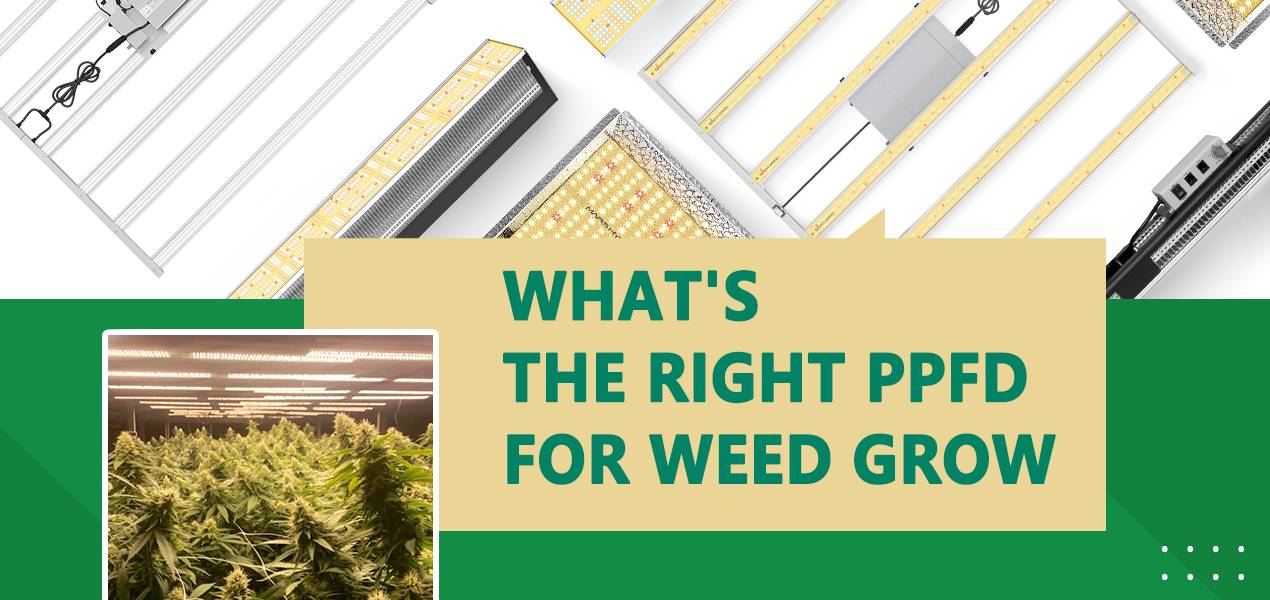
What’s The Right PPFD For Weed Grow?
August 19, 2022When plants are naturally growing in the sun, they’re receiving the full spectrum of solar radiation. That full spectrum includes visible light like red, green, and blue and ultraviolet (UV) and infrared (IR) light. When growing plants, most growers are familiar with the benefits of the color spectrum and their effects on the different stages of plant growth. However, what does UV and IR light do for the plant—do they do anything at all?
In this article, we’ll go over topics related to UV and IR, including:
- Spectrum
- What’s UV
- What’s IR?
- How does UV light affect plant growth?
- The pros and cons of UV light on plant growth
- How does IR affect plant growth?
- The pros and cons of IR on plant growth
- How to use UV and IR Light in your garden
Do I need an LED grow light with UV and IR?- UV and IR Lighting Tips
- Light Recommendation
Continue reading below to find out if UV and IR light matter when growing plants indoors.
SPECTRUM

Before we get into ultraviolet light (UV) and infrared (IR), we need to understand a few things about light. Light is a general term for the more complex concept of electromagnetic radiation.
Electromagnetic radiation is a spectrum of electromagnetic waves, measured in nanometers (nm), that go from short to long. The most important part of this spectrum to humans and plants is known as visible light.
On the spectrum of electromagnetic radiation, visible light covers the wavelengths of 400-700 nm.
Visible light is exactly what it sounds like— it’s the light that we can see. Visible light is also essential for plants because it’s the light needed for photosynthesis and plant growth.
In this case, when talking about plants, the range of light from 400-700 nm is known as photosynthetically active radiation (PAR). PAR includes all visible light, more specifically:
- Violet (380 – 450 nm)
- Blue (450 – 495 nm)
- Green (495 – 570 nm)
- Yellow (570 – 590 nm)
- Orange (590 – 620 nm)
- Red (620 – 750 nm)
Of course, some of these wavelengths or lights are more important for plants than others. As you may know, plants don’t absorb many green wavelengths but reflect them, which is why we see plants as green.
What’s Ultraviolet Light (UV)?
UV light is not part of the PAR spectrum, meaning that we can’t see it. However, you’re probably familiar with UV light if you’ve ever gotten a sunburn from a sunny day at the beach.
Although we can’t see UV light, it’s also being emitted by the sun and covers a range from 100 to 400 nm. However, there are three main types of UV light depending on their wavelength.
- UV-A (315-400 nm)
- UV-B (280 – 315 nm)
- UV-C (100 – 280 nm)
UV-A and UV-B are the most important types of UV light because they’re the ones that make it past the ozone layer. UV-C rays are completely absorbed by the ozone layer and don’t make it down to the surface of the Earth.
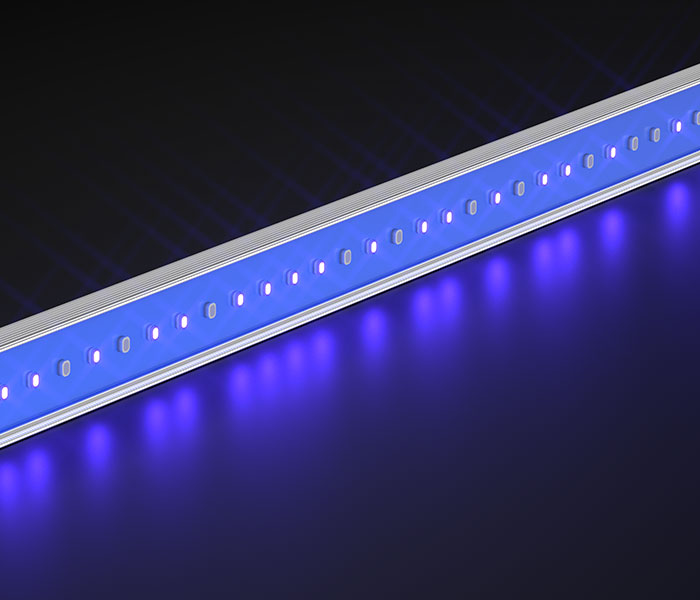

What’s Infrared (IR)?
Like UV light, IR isn’t part of the PAR spectrum, and we can see it neither. IR is considered anything beyond 700 nm, and we often feel IR light as heat.
It’s estimated that about half of the energy released by the Sun reaches the Earth in the form of IR light. In fact, about 49% of the heat on Earth is from IR
HOW DOES UV LIGHT AFFECT PLANT GROWTH?
You might be wondering—if UV light falls outside the range of PAR, then does it have any effect on plant growth? The short answer is—yes, it does.
We need to remember that light isn’t just energy or food for plants. Light is also a source of information for them.
One of the ways plants can sense their environment is through UV light. When a plant absorbs a lot of UV radiation, it knows that it’s in direct sunlight.
When that happens, the plant will start to create natural compounds to safeguard itself from the damaging effects of UV light. When a plant changes its growth pattern in response to light, it’s known as photomorphogenesis.

The Pros of UV Light on Plant Growth
Photomorphogenesis can be beneficial to plant growth in several ways. First and foremost, UV light helps make plants more resistant to pests, stresses, and diseases.
In general, UV light fortifies plants and helps them become stronger.
On top of that, UV light helps plants perform photosynthesis quicker. In one study, scientists found that exposure to UV-A light boosted leaf size, growth, and dry weight.
Basically, that means that UV light could lead to more yield.
Perhaps the most exciting effect of UV light on plants is the increased production of resins. Since UV light can be damaging, plants will increase the number of trichomes on their surface to protect them.
When growing cannabis, this means that the cannabis plant will produce more cannabinoids, especially THC. For those who want to grow the most potent cannabis, UV light may be able to push the boundaries of high-THC content.
The Cons of UV Light on Plant Growth
As we mentioned, plants are usually trying to protect themselves from UV light. That means that UV light in high quantities can be harmful to plants.
Too much of both UV-A and UV-B can suppress photosynthesis, making the plant much less efficient at growing. Not only that, but UV light can damage crops physically.
UV light can damage the DNA of plant cells, causing them to die, which affects the plant’s appearance and growth.
When growing cannabis, too much UV light may prevent larger yields. That’s because the cannabis plant will be focused on producing trichomes to protect itself.
The cannabis plant spends more energy producing trichomes than it does on growing larger and more robust. In the end, UV light might cause more potent cannabis, but a lot less of it.
HOW DOES IR AFFECT PLANT GROWTH?
As we mentioned, plants use different types of light to ‘see’ their environment. IR light is another type of information that a plant can use.
More specifically, IR light can induce a shade avoidance response in plants. Remember, plants always want the optimal amount of light for themselves.
If they detect that they’re in a shaded area, they’ll want to move to a place where they can get more light. The way plants can tell that is through a ratio between red light and far-red light (IR).
If the ratio between red light and far-red light is high enough, the plant knows that it’s in a sub-optimal location. When that happens, the plant will begin to grow and stretch outwards to receive more light.
The plant protein responsible for sensing IR light is called phytochrome. The interesting part is that phytochrome is also responsible for triggering the flowering stage.
In addition to this, botanists have found that exposing plants to IR exposure alone modulates plant perception and accelerates them into the sleep phase.

The Emerson Effect
The main effect of IR radiation on plant growth is through something known as the Emerson Effect. In 1957, Robert Emerson found that IR light and red light together could boost photosynthesis.
He discovered this by looking at the rate of photosynthesis after a plants’ chloroplasts were exposed to certain wavelengths. If a plant was exposed to wavelengths of 680 nm (far-red) and greater than that (IR light), then there would be an increase in photosynthesis.
When he exposed the chloroplasts to only far-red or IR light, then the photosynthesis rates were lower. It turns out that the different photosystems process different wavelengths, and plants need both wavelengths to activate all the photosystems.
The Pros of IR on Plant Growth
Perhaps the main advantage of IR light is increased PAR thanks to the Emerson Effect. With high photosynthesis rates, more energy is given to the plant to grow bigger and stronger.
With cannabis plants, more IR could mean bigger buds because of the excess energy it has from more photosynthesis.
As we mentioned, plants getting IR light will begin to grow outward because of the shade avoidance response. That’s an advantage for cannabis plants as they have more surface area to catch more PAR.
Lastly, thanks to the phytochrome plant protein, IR light may be able to switch cannabis plants from vegetative to flowering stage faster.
The Cons of IR on Plant Growth
As we mentioned in the beginning, IR radiation causes excess heat. As we know, growing cannabis plants indoors is all about heat reduction.
Remember, when growing cannabis plants, you want optimal conditions, and too much heat can stress out your plant and ruin your crop.
Furthermore, because of the shade avoidance response, the stretching of the leaves and stems may be too much. When growing cannabis plants, we want vigorous, healthy plants that can sustain the weight of massive flowers.
However, if a plant is too stretched out and its stems too thin, it can make the plant fragile and clumsy.
IR light can also reduce a plants’ chlorophyll and anthocyanin content, making the plant appear less bright and more washed-out.
Lastly, IR light may be bad for cannabis seedlings. Too much IR may not allow seeds to germinate completely and can stunt their growth.
HOW TO USE UV AND IR Light In Growing Plants
So now you’re wondering, how do I use UV and IR to my advantage and increase my cannabis plant yields? That is a little trickier than it seems, but below are some tips and tricks when using UV and IR lighting.

UV Lighting Tips
When growing cannabis, using small amounts of UV throughout the entire grow is good to mimic the mother light. But there’s no obvious effect on crop size.
However, there are benefits to supplementing your cannabis plants with more UV light. More specifically, some growers supplement their cannabis plants with UV-A light or UV-B light to get more THC.
To get more THC, growers will use supplemental UV light 2 hours a day for the last three weeks during flower. Remember, more UV will force the cannabis plant to produce more THC-rich trichomes to protect itself. You’ll want to use 1-2 watts of UV lighting per square foot. 1 watt per square foot is functional and it’s important not to exceed more than 4 kJ per meter squared of UV light per day.
Adding a shorter time of supplemental UV light is also beneficial for the last half of the veg stage. UV light can help toughen the cannabis plant and prevent the growth of powdery mildew.
Also, please note that UV rays can hinder growth and stress cannabis plants if used in other growing stages, or if too much UV is used in a day.
IR Lighting Tips
Small amounts of IR light throughout the cannabis life cycle pose no harm and may even be beneficial. Once again, IR light is constantly present in cannabis’ natural environment, so there’s no reason it would harm the plant.
In fact, an adequate amount of IR light will increase the leaf length and height of your cannabis plants.
However, you must be sure that the LED grow light you’re using has the correct ratio of IR light to red light. If your LED grow light has the wrong ratio, then your plants may grow too tall to keep healthy or they will feel too hot to grow. And it is best not to use IR in the germination stage.
The problem is, that some LED grow light manufacturers may not have the correct IR ratio, which could end up harming your plants. Find a reliable LED company when you buy LEDs with IR light – your seeds may not germinate at all under IR light.
If your grow lights don’t contain an IR spectrum, then you can supplement it with an IR light bar and use a more precise control.
Many growers will use supplemental IR light to initiate the sleep phase of the cannabis plant. They do this by turning on the IR (or far-red) light 10 minutes before the lights turn off, then leaving the IR light on for 10 minutes after the lights turn off.
This tricks the cannabis plant into thinking that night is falling and enters the regenerative phase quicker. Some growers will use this to their advantage and change the lighting schedule from 12/12 to 13.5/10.5 so that the plants will have an extra 1.5 hours for photosynthesis.
That extra photosynthesis can result in way bigger yields than using the regular 12/12 cycle.
Other Considerations for UV Light
Remember that UV light will not kill bugs. Many manufacturers claim this, and UV light can help strengthen a plant against bugs but will not directly affect them.
The only UV light that may harm bugs is UV-C light. However, you should never use UV-C light in your grow room because it’s incredibly harmful to plants.
If you’re growing a high CBD strain, then supplementing UV light may not be the best idea. Adding more UV light results in increased THC content and less CBD content.
DO I NEED AN LED GROW LIGHT WITH UV AND IR DIODES?
Not necessarily, because as you can see, UV and IR are only beneficial under the right circumstances. That’s why professional growers will use separate UV and IR light bars to accurately control their lighting and get the real benefits of UV and IR.
Many of the LED grow lights on the market today are equipped with only a small amount of UV and IR light, which helps to mimic sunlight. These lights will not cause any harm to the plants, nor will they have the benefit of UV and IR.
Even with a sufficient amount of UV and IR, the UV and IR lights on LED grow lights are not controllable. That means that you can’t have precise control over how much UV or IR to use.
In the end, LED grow lights without UV and IR LED chips do not make them inferior; rather, they offer the application scenarios for precise control of UV and IR.
However, for some cannabis growers who seek potent buds and significant growth, it’s better off to get supplemental UV and IR light bars to add to your grow room. A full-spectrum LED together with supplemental UV or IR bars will contribute a lot to your grow, as long as you know how to use them.
LED GROW LIGHT RECOMMENDATION
Mars Hydro does have some LEDs that are equipped with several UV diodes and IR diodes to support various grow cultivation applications.
- LEDs with the right ratio of IR and red light: TS series
- LEDs with a small amount of UV and IR to mimic sunlight: FC-3000, FC-E 3000; FC-4800, FC-E 4800.
Mars Hydro also has some LEDs that have no UV or IR light for growers who plan to get the scheduled amount of UV light and IR light in the needed time.
- LEDs without UV or IR but high red light: SP3000, SP6500.
- LEDs without UV or IR warm white light for precise control: FC6500, FC-E 6500.
And Finally, Mars Hydro recently released their UV & IR light bar for ambitious cultivators to supplement the right amount of UV light and IR light to their indoor growing.
- UV Light Bar & IR Light Bar: UR45 UV and IR grow light bar
Remember, as a functional design, UV & IR are the less important aspects when you choose an LED grow light. Click to know how to choose a high-quality LED grow light.
Thanks for watching and hope this blog can help you.

